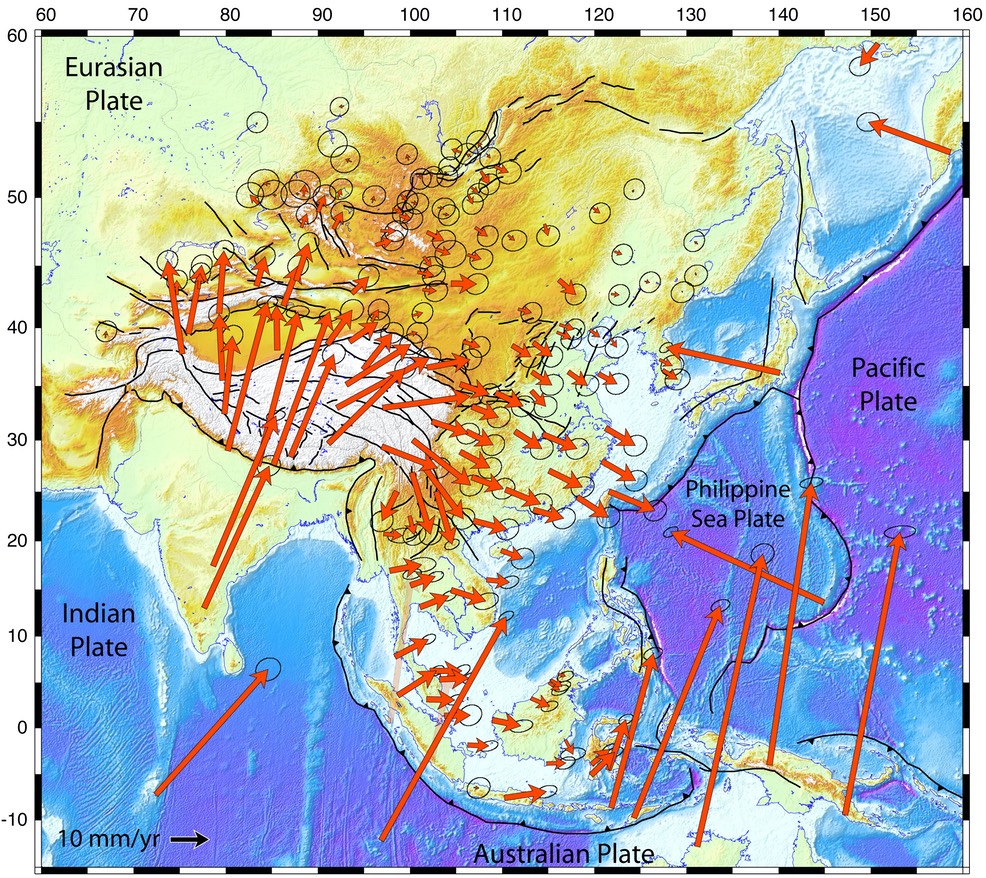Because of its large spatial extend, Asia has long been used as a natural laboratory to study how and why continents deform. After decades of research on continental tectonics, there is however no consensus either on the mode of deformation of continents, or on the forces that drive their deformation. For some, continental lithosphere deforms as a mosaic of rigid lithospheric blocks bounded by fast-slipping faults affecting the entire thickness of the lithosphere. In that view, deformation in the Asian continent is solely driven by boundary forces due to the India-Eurasia collision. For others, deformation is pervasive and continents can be treated as a continuously deforming viscous medium where faults play a minor role. In that view, deformation in Asia is driven for a large part by buoyancy forces resulting from crustal thickening in response to the India-Eurasia collision.

Discriminating between these models and understanding the dynamic of continental deformation requires, among other data sets, spatially dense measurements of lithospheric strain rates covering the whole deforming area. Our work in Asia addresses the issue of the dynamic of continental deformation through a combination of geodetic observations and deformation models.
